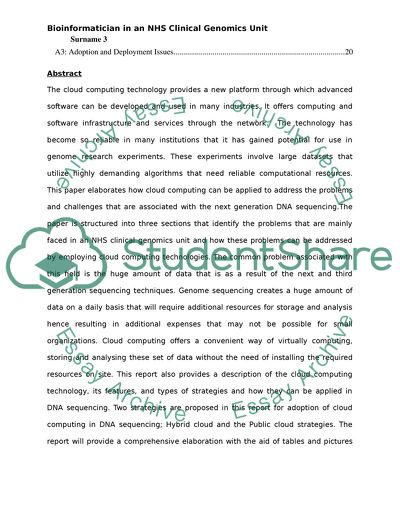Cite this document
(Bioinformatician in an NHS Clinical Genomics Unit Report Example | Topics and Well Written Essays - 3250 words, n.d.)
Bioinformatician in an NHS Clinical Genomics Unit Report Example | Topics and Well Written Essays - 3250 words. https://studentshare.org/information-technology/1861000-bioinformatician-in-an-nhs-clinical-genomics-unit
Bioinformatician in an NHS Clinical Genomics Unit Report Example | Topics and Well Written Essays - 3250 words. https://studentshare.org/information-technology/1861000-bioinformatician-in-an-nhs-clinical-genomics-unit
(Bioinformatician in an NHS Clinical Genomics Unit Report Example | Topics and Well Written Essays - 3250 Words)
Bioinformatician in an NHS Clinical Genomics Unit Report Example | Topics and Well Written Essays - 3250 Words. https://studentshare.org/information-technology/1861000-bioinformatician-in-an-nhs-clinical-genomics-unit.
Bioinformatician in an NHS Clinical Genomics Unit Report Example | Topics and Well Written Essays - 3250 Words. https://studentshare.org/information-technology/1861000-bioinformatician-in-an-nhs-clinical-genomics-unit.
“Bioinformatician in an NHS Clinical Genomics Unit Report Example | Topics and Well Written Essays - 3250 Words”. https://studentshare.org/information-technology/1861000-bioinformatician-in-an-nhs-clinical-genomics-unit.


